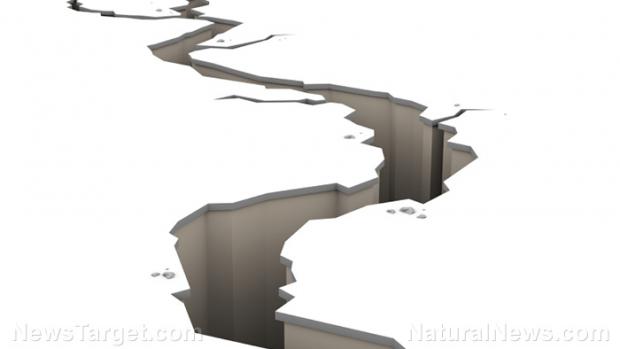
Breaking News
 2 Hours of Retro Sci-Fi Christmas Songs | Atomic-Age Christmas at a Snowy Ski Resort
2 Hours of Retro Sci-Fi Christmas Songs | Atomic-Age Christmas at a Snowy Ski Resort
 Alternative Ways to Buy Farmland
Alternative Ways to Buy Farmland
 LED lights are DEVASTATING our bodies, here's why | Redacted w Clayton Morris
LED lights are DEVASTATING our bodies, here's why | Redacted w Clayton Morris
Top Tech News
 Travel gadget promises to dry and iron your clothes – totally hands-free
Travel gadget promises to dry and iron your clothes – totally hands-free
 Perfect Aircrete, Kitchen Ingredients.
Perfect Aircrete, Kitchen Ingredients.
 Futuristic pixel-raising display lets you feel what's onscreen
Futuristic pixel-raising display lets you feel what's onscreen
 Cutting-Edge Facility Generates Pure Water and Hydrogen Fuel from Seawater for Mere Pennies
Cutting-Edge Facility Generates Pure Water and Hydrogen Fuel from Seawater for Mere Pennies
 This tiny dev board is packed with features for ambitious makers
This tiny dev board is packed with features for ambitious makers
 Scientists Discover Gel to Regrow Tooth Enamel
Scientists Discover Gel to Regrow Tooth Enamel
 Vitamin C and Dandelion Root Killing Cancer Cells -- as Former CDC Director Calls for COVID-19...
Vitamin C and Dandelion Root Killing Cancer Cells -- as Former CDC Director Calls for COVID-19...
 Galactic Brain: US firm plans space-based data centers, power grid to challenge China
Galactic Brain: US firm plans space-based data centers, power grid to challenge China
 A microbial cleanup for glyphosate just earned a patent. Here's why that matters
A microbial cleanup for glyphosate just earned a patent. Here's why that matters
 Japan Breaks Internet Speed Record with 5 Million Times Faster Data Transfer
Japan Breaks Internet Speed Record with 5 Million Times Faster Data Transfer
Breakthrough construction material for earthquake protection will mean safer buildings and bridges

(Natural News) Earthquakes can cause immense damage to infrastructure, in turn hindering the operation of important public services. A team of researchers from the Universitat Politècnica de València reportedly developed a new construction element capable of overcoming that problem.
Dubbed "Smart Seismic Concrete Connection" (SSCC), this material is a combination of two "symbiotic" components: Shape-memory metal alloy bars and high-performance concrete. The result is an element that strengthens the connections between structural materials, and allows structures to recover their original shapes after earthquakes with little need for repairs.
"The use of this system permits having self-centering structures. The invention comes from the desire to solve a need for today's society: constructing seismic-resistant structures for people, and maintaining their operating capacity after an earthquake, without major repairs or economic losses," researcher José Luis Bonet told AlphaGalileo.org.
In addition to providing an extra measure of protection, Bonet and his colleagues stated that SSCC has a multitude of other benefits. The aim of SSCC is to improve structural performance, hence they designed it to be easy to install within existing walls, beams, and columns. Moreover, SSCC has a great advantage over quake-dampening building pendulums in that it doesn't require any additional space, nor does it need regular maintenance to continue doing its job.
"Our philosophy is not constructing more solid structures; rather the contrary," said Bonet. "Just as the wind splits a trunk, a reed is flexible enough to bend, adapt to movement and recover its position when the wind stops blowing, without scarcely suffering damages and splitting."
Bonet added that SSCC was specially designed for infrastructure that would need more protection during emergencies, meaning that he and his colleagues had bridges, hospitals, and power plants in mind. Sports venues and shopping centers were also taken into consideration due to the high volume of people that frequent these places. Residential applications were not out of the picture, however, and developers are more than welcome to utilize the SSCC for the construction of homes, apartments, and condominiums.

 $100 SILVER CONFIRMED?
$100 SILVER CONFIRMED?

